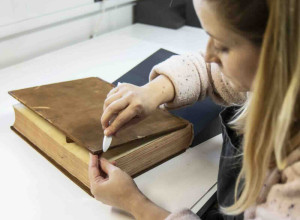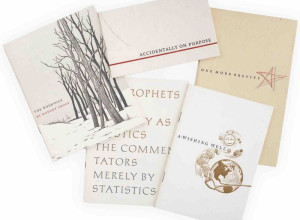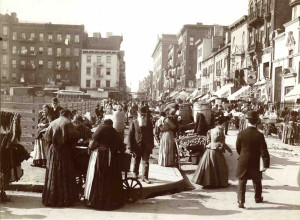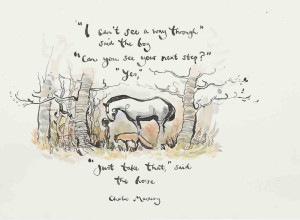Metropolitan Museum of Art Hosts Binding Symposium
MANHATTAN, May 24--The Bonnie J. Sacerdote Lecture Hall at the Metropolitan Museum of Art was the setting for a daylong symposium dedicated to exploring the history, design, and manufacture of late 19th to early 20th century American publishers' book covers, as well as bookbinders' influence on decorative bookbinding and other artistic movements. Over 125 collectors, curators, librarians, binders, and preservationists also gathered to celebrate the recent acquisition of American decorated publishers' bindings by the Met's Watson Library. 
Book cover design by Alice Cordelia Morse. Written by Paul Leicester Ford - http://matrix.scranton.edu/resources/re_art_gallery_exhibition.shtml#, Public Domain, https://commons.wikimedia.org/w/index.php?curid=29981504
After an introduction by the Met's head preservation librarian Mindell Dubansky, Richard Minsky took the podium. The Center for Book Arts founder offered compelling evidence for how American book designers such as Alice Cordelia Morse and Amy Richards formed the vanguard of major artistic movements like Art Deco and Surrealism. Senior book conservator at the Northeast Document Conservation Center Todd Pattison explored the role of women in book production and the industrialization of 19th Century American publishers' bindings. Met curators, including Dubansky and Holly Phillips, spoke about the museum's vast collections dedicated to decorative bookbindings. Alice Cooney Frelinghuysen discussed the influence of stained glass window design on decorative book cover creators.
Women played a huge, if often overlooked role, in the creation of books, and the symposium's speakers highlighted women's achievements in nearly every presentation. During the late 1800s, many women were employed in binderies; folding, sewing, trimming, and stitching books in factories in Philadelphia, Hartford, and New York City. A smaller group of women, such as Alice C. Morse, Sarah Wyman Whitman, and Margaret Armstrong, were primarily responsible for producing beautiful decorative bindings, and maintained successful careers in an ever-evolving industry. Their selection of color palettes, design, and style contributed to the growing field of decorative arts and led the way for future generations of artists.
A closing reception in the Watson library, where original botany watercolors by Margaret Armstrong were on display, put the finishing touches on an illuminating event.















